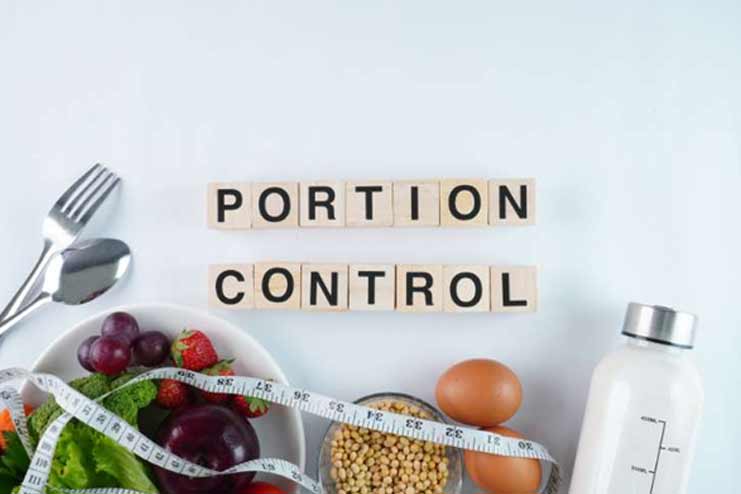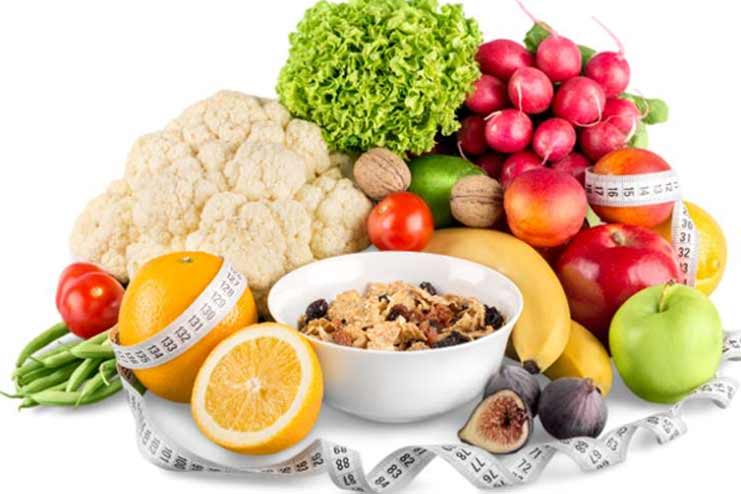Affiliate Disclaimer
Some links in this article are affiliate links. We may earn a small commission if you make a purchase through these links, at no extra cost to you. We only recommend products we find useful to our readersInsulin resistance occurs when the body’s cells cannot react to the hormone insulin, which is essential for turning glucose into energy. This inefficiency raises blood sugar levels, raising the risk of major health problems like type 2 diabetes, heart disease, and obesity. It is concerning to estimate that 88 million persons in the United States—nearly one in three—are insulin resistant and frequently exhibit no symptoms at all.
Diet can effectively aid the management of insulin resistance, as our dietary choices have a substantial impact on insulin sensitivity. A balanced diet which is high in whole foods, fiber, lean protein, and healthy fats can help people achieve better metabolic health. Knowing this link gives people the confidence to control their health by making wise dietary decisions.
Key Dietary Components

Power Foods for Insulin Sensitivity:
Maintaining appropriate blood sugar levels through a well-balanced, nutrient-rich diet is essential to managing insulin resistance. Some meals are incredibly effective at increasing insulin sensitivity, which makes them valuable tools for controlling insulin resistance.
Complex carbs are excellent energy sources since they break down gradually and stabilize blood sugar levels. Examples of these are quinoa and barley. Fish, poultry, and plant-based legumes are examples of lean proteins high in necessary amino acids but low in added fats that may interfere with insulin regulation. Good fats, especially those found in avocados and olive oil, lower inflammation and strengthen heart health, which enhances insulin sensitivity. Plant-based diets contain fiber, a carbohydrate essential for controlling insulin resistance. Foods high in fiber are more difficult for the body to absorb and break down than simple carbs, which can lead to sharp spikes in blood sugar levels.
These foods are crucial to any diet plan that aims to reverse insulin resistance because they support healthy metabolic function while nourishing the body.
Foods to Avoid: Navigating the Pitfalls:
While certain meals are beneficial to insulin sensitivity, others can negatively impact it. While it is crucial to consume a well-balanced diet that is abundant in beneficial nutrients to manage insulin resistance effectively, restricting or avoiding specific foods is also essential. Consuming foods high in sugar results in a sudden rise in blood sugar levels, which can contribute to inflammation and weight gain.
The situation is made even worse by the presence of trans fats, which are frequently present in processed and fried foods. Trans fats not only cause inflammation but also encourage the storage of fat around essential organs. Avoiding these dietary mistakes is absolutely necessary for maintaining stable blood sugar levels and preventing the progression of insulin resistance. Substituting these meals with alternatives that are better for your health is a simple action that can have a substantial impact on health.
Meal Planning and Portion Control: Your Daily Guide

Eating balanced, nutrient-dense meals is essential for those with insulin resistance. Creating well-rounded meals is vital in controlling insulin resistance. The “half-plate rule” is a straightforward but powerful tactic: for fiber and essential nutrients, cover half of your plate with non-starchy veggies like broccoli, bell peppers, and leafy greens. Lean protein sources such as chicken, fish, or plant-based substitutes should make up one-quarter of the meal, with healthful grains like quinoa or barley making up the other quarter. Eat at regular intervals—three balanced meals plus two healthful snacks—to avoid blood sugar rises. Eating at regular intervals of three to four hours maintains blood sugar stability, which minimizes the need for insulin spikes and avoids energy dips.
Sample Meal Plans
Here’s a sample meal plan for one week:
- Breakfast: Oatmeal with chia seeds and berries
- Mid-Morning Snack: Greek yogurt with walnuts
- Lunch: Grilled salmon, quinoa, and steamed spinach
- Afternoon Snack: Apple slices with some almond butter
- Dinner: Chicken stir-fry with mixed vegetables and some brown rice
This plan balances lean proteins, complex carbs, and healthy fats while avoiding refined sugars.
Portion Control Techniques:
Mastering portion management can significantly improve insulin sensitivity. Using smaller plates is one inventive way to organically reduce portion sizes without creating a sense of deprivation. Using your hands as a guide for portion control is another helpful strategy. A palm-sized quantity of protein, a fistful of veggies, a cupped handful of whole grains, and a thumb-sized amount of healthy fats (like olive oil) are all examples of appropriate portions. You may maintain stable blood sugar levels by ensuring that you are consuming a proper amount by using these visual signals. The practice of mindful eating, which involves chewing carefully and enjoying each bite, not only helps you notice cues that indicate fullness but also helps you avoid overeating and better manage your insulin levels.
The Role of Specific Diets

The Mediterranean Diet:
Inspired by the traditional eating patterns of nations that border the Mediterranean Sea, the Mediterranean diet is well-known for its emphasis on fresh, whole foods and healthy fats. They named this diet after the Mediterranean Sea. Because of the anti-inflammatory features of the Mediterranean diet, which includes foods like fish and olive oil, it helps increase insulin sensitivity, fight inflammation, and regulate blood sugar levels. People can consume large quantities of fruits, vegetables, legumes, and whole grains with this diet as well. Eating fish and dairy products in moderation is recommended. Olive oil is used consistently as the principal source of fat here. You should consume red meat, processed foods, and sugary drinks in moderation.
Low-Carb Diets:
Carbohydrates are the primary cause of rises in blood sugar, and low-carb diets operate by reducing the amount of carbohydrates consumed. After some time, insulin sensitivity will improve due to reduced carbohydrate consumption since the body will require less insulin to control glucose levels. Many people find that low-carb diets, such as the ketogenic diet or the Atkins diet, help them lose weight and better control their blood sugar levels. Despite this, these diets can be challenging to maintain and may lead to nutrient deficits if not carefully thought out, particularly about fiber and vitamins. Planning and monitoring meals with excellent care is necessary to ensure that low-carb diets are successful without compromising overall health.
The DASH Diet:
Although the Dietary Approaches to Stop Hypertension diet, more popularly referred to as the DASH diet, was first developed to reduce blood pressure, it also provides advantages for managing insulin resistance through its use. This diet is a good choice for controlling insulin resistance because it strongly emphasizes nutritious foods that are abundant in potassium, magnesium, and fiber. This list of nutrient-dense foods includes a wide variety of fruits and vegetables that help maintain stable blood sugar levels and improve the overall health of your metabolic system. Whole grains and lean protein sources, like fish, poultry, and beans, are good options—dairy products with low-fat content and restricted consumption of saturated and trans fats, sodium, and calories.
Practical Tips for Implementation

Mindful Eating Practices:
In today’s fast-paced world, intentionally taking the time to slow down and savor your meals can be a game-changer, particularly when controlling insulin resistance. Mindful eating encourages you to concentrate on each mouthful, paying attention to the different flavors, textures, and sensations your body experiences while you consume food. It improves the quality of your dining experience but also assists in regulating hunger cues, which helps prevent excessive eating. One helpful piece of advice is to chew each bite at least twenty times and take a short break between pieces. It will allow your body to detect when it is complete. In addition, consider maintaining a food journal. If you record what you consume and how you feel before and after meals, you can recognize patterns, such as foods that cause your blood sugar to spike or foods that boost your energy levels.
Cooking and Preparation Techniques:
Simplifying the process of preparing meals is of the utmost importance. Utilize cooking techniques that benefit your health and help maintain the nutritional value of your meals. Some excellent alternatives include steaming vegetables, grilling lean proteins, and softly sautéing dishes in olive oil. Accept the idea of cooking in batches to save time. Devote one day of the week to preparing large quantities of meals and storing them in the refrigerator or a freezer for easy access throughout the week. Prepare freezer-friendly foods like soups, stews, or grain bowls that can be reheated in minutes. It will assist you in maintaining your diet without the headache of cooking every day.
Conclusion
You can take the first step in managing insulin resistance by making minor, deliberate modifications. You can regain control of your health and fuel your body with every meal. You can improve insulin sensitivity and set the stage for a healthier, more active life by adopting a diet high in whole grains, lean meats, healthy fats, and veggies. These manageable, tiny actions will gain momentum and eventually become healthy habits that enhance your well-being. Each food you eat is a step closer to improved metabolic health.
References
- https://www.baystatehealth.org/articles/prediabetes
- https://www.webmd.com/diabetes/diabetes-insulin-resistance-diet
- https://www.health.com/insulin-resistance-diet-8407040
- https://www.eatingwell.com/article/8027946/meal-plan-for-insulin-resistance
- https://zoe.com/learn/insulin-resistance-diet
- https://my.clevelandclinic.org/health/diseases/22206-insulin-resistance
- https://www.nebraskamed.com/health/conditions-and-services/diabetes/5-best-foods-to-improve-insulin-resistance
- https://www.medicalnewstoday.com/articles/316569
- https://www.rupahealth.com/post/the-3-key-principles-of-insulin-resistance-diet
- https://www.healthcentral.com/condition/diabetes/insulin-resistance-diet
- https://www.healthline.com/health/diabetes/insulin-resistance-diet
- https://bodyk.net/simple-meal-plan-for-insulin-resistance/
- https://listonic.com/meal-plans/en/14-day-meal-plan-for-insulin-resistance
- https://truelifemedicine.com/simple-meal-plan-insulin-resistance
- https://www.ncbi.nlm.nih.gov/pmc/articles/PMC7600669
- https://www.medicalnewstoday.com/articles/316569#diet-tips
- https://www.mdpi.com/2072-6643/12/10/3042
In this Article





















